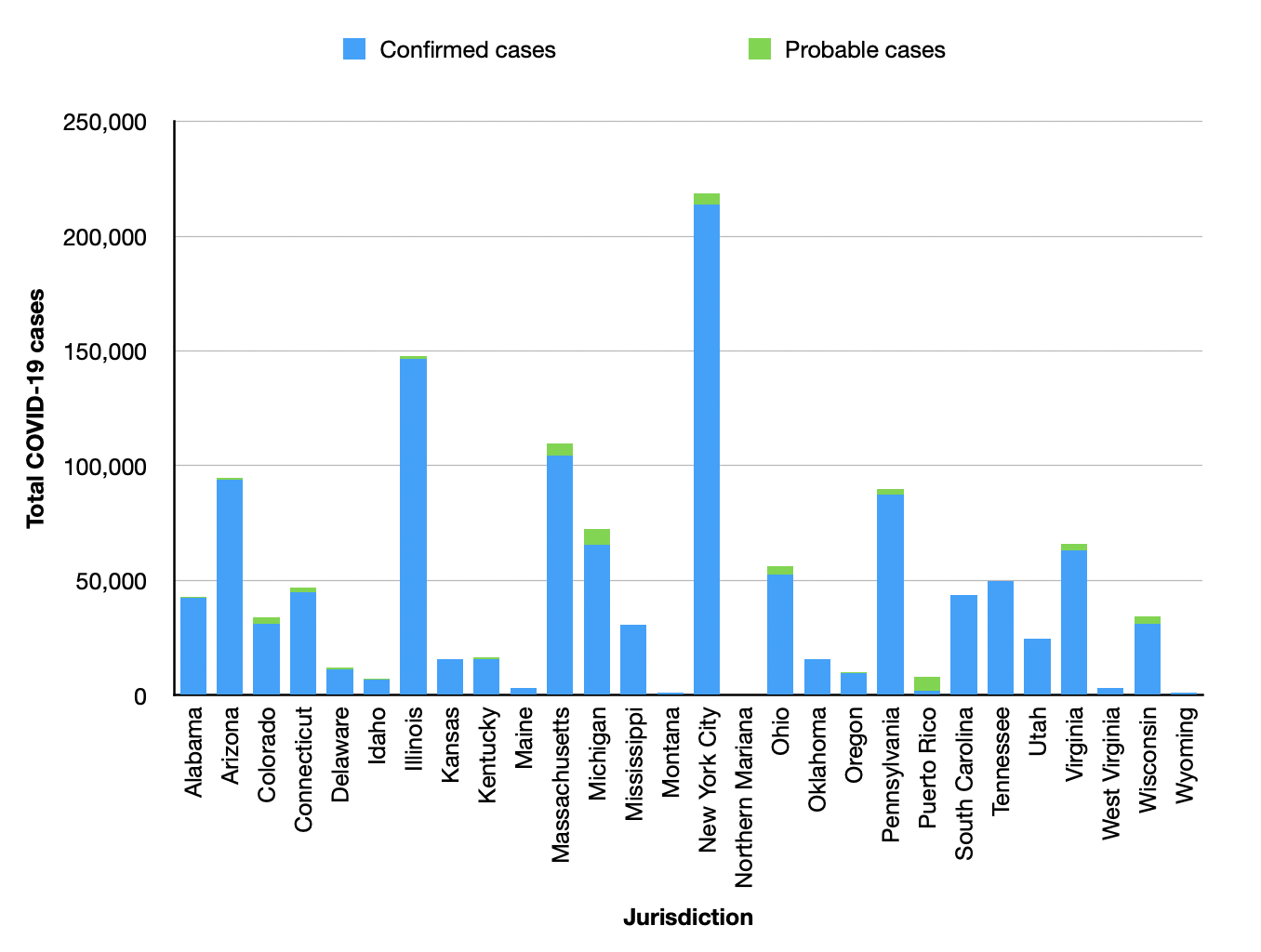

RECLAMACION: Antibodies for the common cold produce a positive COVID-19 test; false-positive results from COVID-19 antibody testing are behind the COVID-19 cases reported in the U.S.
REVIEW
A claim that people can test positive for COVID-19 if they have antibodies for the common cold, with the implication that COVID-19 cases in the U.S. are mainly due to false-positive antibody test (serological test) results, began circulating on social media in early July 2020 and went viral, receiving more than a million views on Facebook within a few days of circulation. Many such Facebook posts are accompanied by a screenshot of the U.S. Centers for Disease Control and Prevention (CDC) website on the COVID-19 antibody test. An example of one such post can be seen here, while an article making the same claim can be seen here.
The screenshot is genuine—it is true that the CDC has cautioned that a COVID-19 antibody test may produce a positive result in the presence of antibodies against viruses causing the common cold. This is because some viruses that cause the common cold also belong to the same family of coronaviruses as SARS-CoV-2, potentially leading to cross-reactivity in COVID-19 antibody testing. However, it is inaccurate and misleading to claim that false-positive results from antibody testing are responsible for the number of COVID-19 positive cases detected in the U.S.
By examining this CDC website, we can see that the agency’s report of total COVID-19 cases “includes confirmed and probable cases and deaths”. The CDC bases its definitions of a confirmed and probable case from a Position Statement by the Council of State and Territorial Epidemiologists (CSTE), which was approved on 5 April 2020.
According to the CSTE, a confirmed case is defined as one that “meets confirmatory laboratory evidence.” The CSTE considers confirmatory laboratory evidence as “Detection of severe acute respiratory syndrome coronavirus 2 ribonucleic acid (SARS-CoV-2 RNA) in a clinical specimen using a molecular amplification detection test.” This test detects the presence of the virus’ genetic material in samples using a molecular technique called real-time reverse transcription PCR (RT-PCR). As explained in an earlier Health Feedback review, the RT-PCR test is highly specific for SARS-CoV-2 and would not detect other viruses belonging to the coronavirus family, unlike antibody testing.
On the other hand, a probable case as defined by the CSTE needs to meet one of the three requirements:
“Meets clinical criteria AND epidemiologic evidence with no confirmatory laboratory testing performed for COVID-19.
Meets presumptive laboratory evidence AND either clinical criteria OR epidemiologic evidence.
Meets vital records criteria with no confirmatory laboratory testing performed for COVID-19.”
According to the CSTE statement, presumptive laboratory evidence can involve either the “detection of specific antigen in a clinical specimen” or “detection of specific antibody in serum, plasma, or whole blood indicative of a new or recent infection.”
Therefore, a positive antibody test can indeed be part of the inclusion criteria for a COVID-19 case and it is possible that some probable cases among the total COVID-19 cases in the U.S. are due, in part, to antibody testing. However, as mentioned above, antibody test results must also be combined with the presence of either the clinical criteria or epidemiologic evidence for COVID-19. Clinical criteria includes the presence of signs and symptoms associated with COVID-19, such as fever, myalgia (muscle aches), headache, and sore throat. Epidemiologic evidence includes close contact with a confirmed COVID-19 patient. In short, a positive antibody test alone is not sufficient for counting someone as a probable COVID-19 case.
While probable cases, which may involve positive antibody test results, also comprise a part of the total COVID-19 cases detected in the U.S., they most likely do not contribute to the majority of cases. In fact, looking at the breakdown of total COVID-19 cases from 28 jurisdictions reported on the CDC website (see table below), we can observe that confirmed cases vastly outnumber probable cases, with the sole exception of Puerto Rico. Since RT-PCR testing is much more reliable for detecting current COVID-19 infection compared to antibody testing, the trend of confirmed cases outnumbering probable ones is likely to hold true for most, if not all, of the U.S.

In summary, it is inaccurate and misleading to claim that antibodies from the common cold produce a positive COVID-19 test result, as viral tests for current COVID-19 infection are performed using RT-PCR, not antibody testing. It is also inaccurate to claim that the number of COVID-19 cases in the U.S. is due to false-positive results from COVID-19 antibody testing. This is supported by data from 28 U.S. jurisdictions, which show that the vast majority of COVID-19 cases are confirmed cases, which are detected using the highly specific molecular test for current COVID-19 infection.
READ MORE
Reuters, Lead Stories, and USA Today also fact-checked this claim; all three found it to be false.


